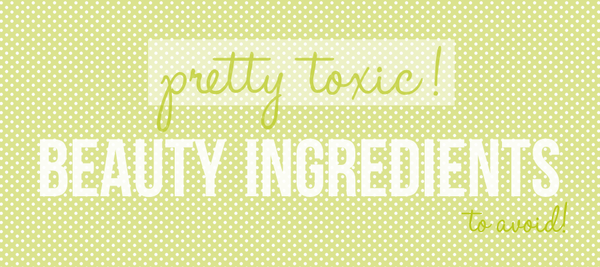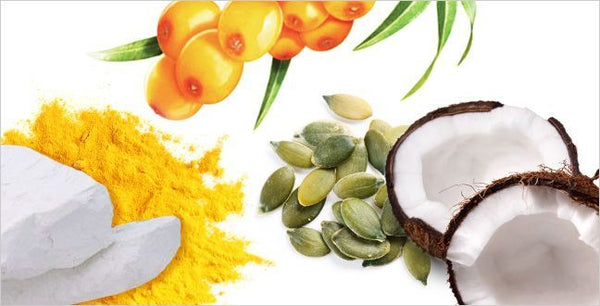INGREDIENTS
- Ingredients to Avoid
- Ingredients we Use
- What’s GMO free
- Why Organic
- Choose Cruelty Free
Skin Care should be safe - gentle - effective…..
At Amboni Organics, we see organic and natural skin care education as a key to our strength and viability as a sensitive skin care company.
We believe consumers should be informed to enable them to make the best choices about natural and organic skin care. We are often told what ingredients we should be putting on our face and bodies while there is so much confusion about what ingredients we should be avoiding. There are so many unnecessary chemicals that are used in today’s skin care products many of which are dangerous and damaging to the skin and mucous membrane, that we have made a list of the nastiest ingredients commonly used in the face and body care industry today. These notorious ingredients are hard to pronounce and found in some of the big names in skin care, so just because you are paying top dollar for a well marketed product, doesn't mean that you are getting a top quality product.
Many of the following ingredients are listed on products using a different name, but we will continue to keep you informed of these and other damaging, allergenic, and many times carcinogenic pollutants to your body and the environment.

INGREDIENTS TO AVOID
1. Methyl, Propyl, Butyl, and Ethyl Paraben - These are the most common preservatives used in skin/hair care today. They are designed to inhibit microbial growth, which extends the shelf life of products for up to 3 years (imagine your Facial Cream sitting on a shelf for 2 ½ years before you got it – no thanks). Parabens are widely used even though they are known to be toxic. Parabens have been known to cause many allergic reactions and skin rashes and are commonly used as a group to preserve.
2. Imidazolidinyl Urea and Diazolidinyl Urea - The most commonly used preservatives after the parabens. Derived from ANIMAL urine, they are well established as a primary cause of contact dermatitis (American Academy of Dermatology).
3. Isopropyl Alcohol - This is a solvent and denaturant (poisonous substance that changes another substances natural qualities). Isopropyl alcohol is found in hair colour rinses, body rubs, hand lotions, after-shave lotions, fragrances and many other cosmetics. This petroleum-derived substance is also used in antifreeze and as a solvent. It is very drying and damaging to hair and skin, according to ‘A Consumer's Dictionary of Cosmetic Ingredients’, inhalation or ingestion of the vapour may cause headaches, flushing, dizziness, mental depression, nausea, vomiting, narcosis and even coma.
4. Mineral Oil & Petrolatum - The best baby oil is made from vegetable oils; however there are still companies that are selling baby oil that is 100% mineral oil. Mineral oil is a derivative of crude oil (petroleum) that is used industrially as a cutting fluid and lubricating oil. Petrolatum - A petroleum-based jelly that is used industrially as a grease component. It is commonly contaminated with PAHs, or polycyclic aromatic hydrocarbons, Petrolatum exhibits many of the same potentially harmful properties as mineral oil and is found in 40 percent of all baby lotion and oils (products assessed by EWG).
5. Propylene Glycol (PG)- Propylene Glycol is actually the active component in antifreeze. There is no difference between the PG used in industry and the PG used in personal care products. It is used in industry to break down protein and cellular structure (what the skin is made of) yet is found in most forms of make-up, hair products, lotions, after-shave, deodorants, mouthwashes and toothpaste. The Material Safety Data Sheets warn against skin contact, as PG has systemic consequences such as brain, liver and kidney abnormalities.
6. Polyethylene Glycol (PEG) - Polyethylene glycol is used in making facial cleansers to dissolve oil and grease as well as thicken products. Because of their effectiveness, PEG's are often used in caustic spray in oven cleaners and yet are found in many personal care products. PEG's contribute to stripping the skin while also leaving the immune system vulnerable. They are potentially carcinogenic.
7. PVP/VA Copolymer - A petroleum-derived chemical used in hairsprays, wave sets and other cosmetics. It can be considered toxic, since particles may be inhaled and contribute to foreign bodies in the lungs of sensitive persons.
8. Sodium Lauryl Sulfate (SLS) & Sodium Laureth Sulfate (SLES) – These are the ones most people are familiar with, they are a synthetic substance commonly used in shampoos, body washes and bubble baths for their foaming capabilities. They cause eye irritations, skin rashes, hair loss, scalp irritations (often mistaken for dandruff) and allergic reactions. It is frequently disguised in pseudo-natural cosmetics with the parenthetic explanation "comes from coconut". SLS is a detergent that is used in garage floor cleaners, engine degreasers and is extremely disruptive to the mucous membrane. Research indicates that exposure to SLS can result in eye damage, depression, laboured breathing, diarrhoea, severe skin irritation, and in some cases even death. Eyes may not develop properly if exposed to SLS. SLS can be transformed into nitrosamines, a potent class of carcinogens. They accumulate in the body and maintain residual levels in the heart, liver, lungs, and brain.
9. DEA (diethanolamine) MEA (momoethnanolamine) TEA (triethanolamine) - DEA and MEA are usually listed on the ingredients label in conjunction with the compound being neutralized. For example; look for names like Cocamide DEA, Lauramide DEA, etc. These are hormone disrupting chemicals and are known to form cancer causing nitrates and nitrosamines. These are commonly found in most personal care products that foam, including bubble baths, body washes, shampoos, soaps and facial cleansers. They cause allergic reactions, eye irritation, dryness of skin and scalp/hair. They accumulate in the body over time.
10. Stearalkonium Chloride - A chemical used in hair conditioners and creams, which causes allergic reactions because it is highly toxic. Stearalkonium chloride was developed by the fabric industry as a fabric softener, and is a lot cheaper and easier to use in hair conditioning formulas than proteins or herbals, which do help hair health.
11. Synthetic Colours - The synthetic colours are used to enhance aesthetic properties of the product and make it more appealing to the senses, synthetic colours should be avoided. They will be labelled as FD&C or D&C, followed by a colour and a number. Example: FD&C Red No. 6 / D&C Green No. 6. Synthetic colours are believed to be cancer-causing agents. FD&C Yellow 5, Red 40, Blue #1 are synthetic colours from coal tar that deposits toxins onto the skin, causing skin irritation. Absorption can cause depletion of oxygen in the body and death.
12. Synthetic Fragrances - The synthetic fragrances used in cosmetics can have as many as 200 different ingredients. There is no way to know what the chemicals are, since on the label it will simply say "Fragrance". Some of the problems caused by these chemicals are headaches, dizziness, rash, hyper-pigmentation, violent coughing, vomiting, skin irritation, and the list goes on. Why would companies use Synthetic fragrances when there are so many wonderful natural scents available straight from nature. Avoid ALL products that have the word fragrance on the ingredients list.
13. Saccharomyces Magnesium Ferment - an acid from a yeast which causes damage to the insulin producing beta cells and pancreatic cancer.
14. Butylene Glycol - an acid that may be narcotic and cause asphyxiation.
15. Aqua Biomin Saccharomyces/Magnesium Ferment - This is a yeast and an acid that causes diabetes and other topical yeast infections that can lead to a host of serious symptoms.
16. DMDM Hydantoin - releases a powerful acid and neuro toxin formaldehyde which causes joint pain, skin reactions, allergies, depression, headaches, chest pains, ear infections, chronic fatigue, dizziness, and loss of sleep. Exposure also irritates the respiratory system; triggers heart palpitations or asthma, and can aggravate coughs. Has been linked to a weakened immune system and cancer.
17. Cocomidopropyl Hydroxysultaine - has added chemicals in the processing of the coconut oil which are carcinogenic.
18. Tea lauryl sulfate - is hormone disrupting chemical that can form cancer-causing nitrates. This ingredient is restricted in Europe due to the carcinogenic effects. Repeated applications can result in liver and kidney cancer.
19. Lactic Acid - This is a cancer causing agent. An acid found around all cancerous tumours.
20. Alcohol - Alcohol is a free radical and can cause dryness and flaking of the skin. Also very drying and are known to cause allergic reactions and skin irritation. Naturally occurring alcohol is different (ie: sugar cane alcohol is non-irritating and non-sensitising)
21. Hydroquinone - This ingredient is commonly used in skin whitening products. It is also commonly used in plastics manufacturing and is a highly toxic chemical. This ingredient should not be used on humans or animals. Hydroquinone is a well known carcinogen and is known as a liver, blood, lung and respiratory, reproductive organ and skin toxicant.
22. Ethyl Acetate - This is a highly toxic chemical and is used in cosmetics. This is also used in paint remover products, including nail polish remover. Do not put this ingredient on your body, especially your face.

The ingredients we choose for our formulations have been specifically chosen for their therapeutic properties, their effect on the skin, their gentleness as well as their aroma.
Certified Organic cold pressed base oils – macadamia nut, sweet almond, coconut, rosehip, jojoba, camellia, avocado, wheatgerm. Our cold pressed oils are organic, unfiltered and unbleached; they retain all of their natural characteristics which are beneficial for the skin. Our base oils work synergistically with our essential oils to deliver truly natural skin care that works.
Certified Organic Aromatherapy oils – our essential oils are of superior quality, they are organic wherever available, unrefined and contain valuable therapeutic properties which are necessary for natural corrective skin care.
Certified Organic Extracts & Raw materials – our shea nut butter is fair trade produce which is unrefined, unbleached and as close to nature as you can get, together with the gentle aroma of our unrefined, unbleached cocoa butter, our lotions are rich and nourishing. Our herbal extracts are either in a base of vegetable glycerine or organic sugar cane ethanol (this sugar cane ‘ethanol’ is the chemical name for a naturally occurring plant alcohol which is non-irritating and non-drying to the skin), our clay and salts are Australian sourced and naturally occurring.
Natural Preservatives - we only use pure, organic and natural ingredients to create our formulations and as such must have a preservation system that follows our ethics.The preservatives we use in our skin care are pure and natural and approved for use in organic formulations. We use a combination of natural GMO free vitamin E, organic rosemary leaf extract and two GMO free, natural herbal preservatives. When combined at the correct percentages, our natural preservative and anti-oxidants work synergistically to give a high level of protection against rancidity.
Preservative 1:
Naticide® is a vegetable-based fragrance which also acts as a very effective broad-spectrum anti-microbial preservative, it acts to inhibit the growth of bacteria, mould and yeasts. It is not an eye or skin irritant or a skin sensitiser. It is approved for use in organic skincare by Australia's largest certifier for organic products; Australian Certified Organic (ACO).
Naticide® is a trade name owned by its manufacturer, Sinerga of Italy, and therefore not acceptable for use on a product ingredient list under International Nomenclature of Cosmetic Ingredients (‘INCI’) rules. In line with INCI requirements, Amboni Organics labels refer to Naticide® as Parfum. Parfum can be best defined as: a mixture of fragrant essential oils or aroma compounds, fixatives and solvents used to give the human body, animals, food, objects, and living spaces a pleasant scent.
.
Preservative 2:
"Radish Root: Known as Leuconostoc, Radish Root Ferment Filtrate, is derived from Leuconostoc kimchii, the bacteria that has traditionally been used to make kimchi. This product consists of a peptide that is secreted from the bacteria during the fermentation process that has been shown to have antimicrobial benefits.It is non-irritating, has no known side effects and has been approved for use in Certified Organic products worldwide.
Depending on the type of product we are formulating, depends on which of the two preservatives we will use. We have found the Naticide® works better in a cream/lotion formulation while the Radish Root performs much better in our surfactant based products.
STORAGE
We recommend storing our products below 30ºC, away from direct sunlight and using them in accordance with the Best Before date. We proudly list ALL of our ingredients (even the 1%) on our products and are confident that when our products are compared with other brands, we have the most natural ingredients by far.
We pride ourselves on always using the best and most pure ingredients available, we want you to share our passion and love for truly natural and organic green beauty !
